My tried and tested methods for pruning grape vines get great results every time
Follow these easy methods for pruning grape vines to guarantee neat growth and generous cropping every year

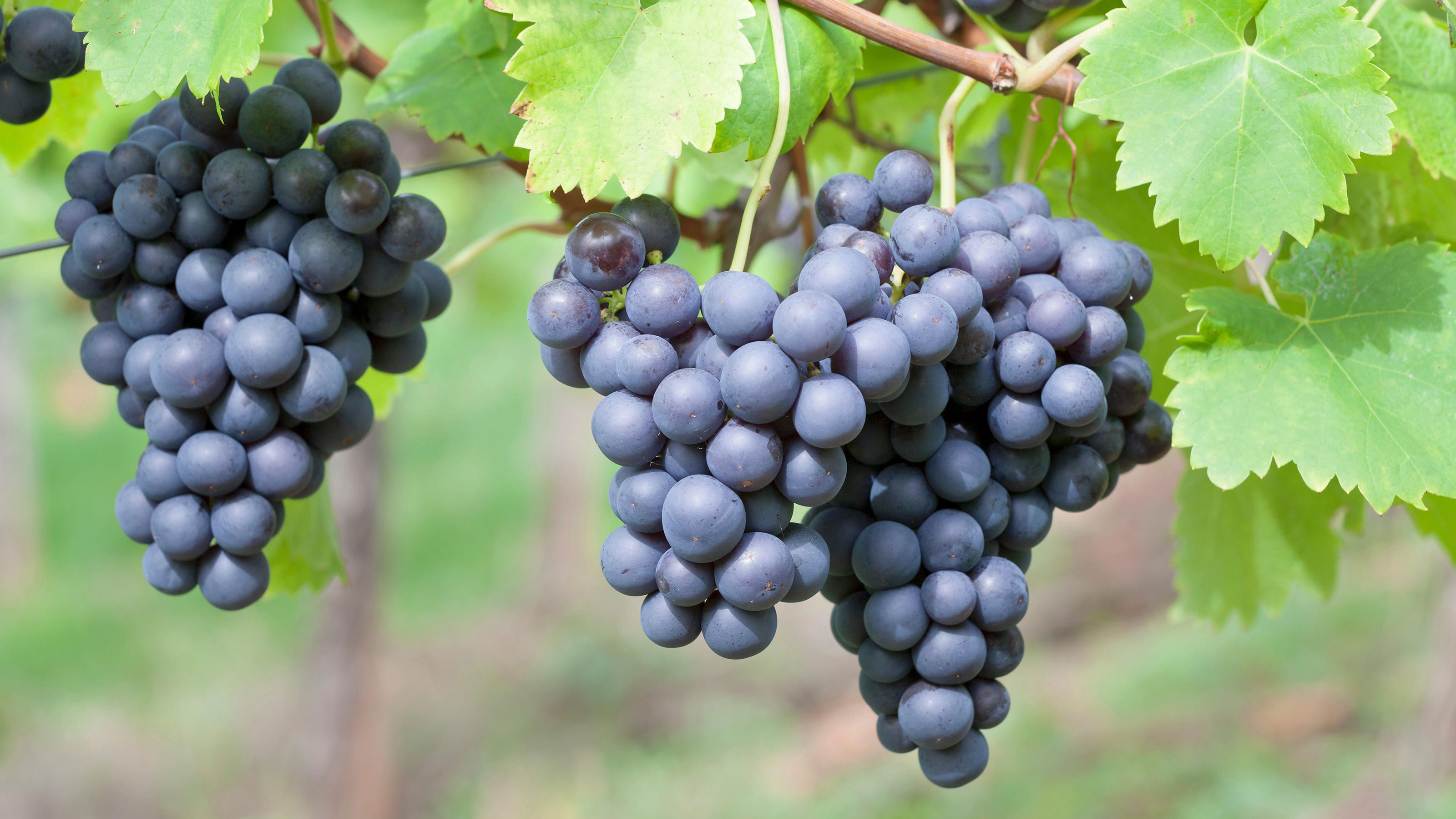
Pruning grape vines is a midwinter job that keeps plants shapely, healthy and fruiting well. Climate change means that grape vines, once the preserve of large conservatories and warmer hemispheres, are now thriving in areas where they were never previously seen.
I planted a vine in my own garden around six years ago and am now starting to see excellent results. It is growing on a south-west facing wall in the UK so gets lots of sun. Last year it produced its first ‘proper’ harvest and I am in the process of making wine (yet to be sampled).
This year I planned to do the same but were on vacation when the grapes were ready to pick and we arrived home to find the local bird population had stripped the vine clean. You live and learn!
Just like pruning an apple tree can be key to it producing lots of fruit, pruning a grape vine is essential to keep it growing and cropping well, and there are several different methods you can use.
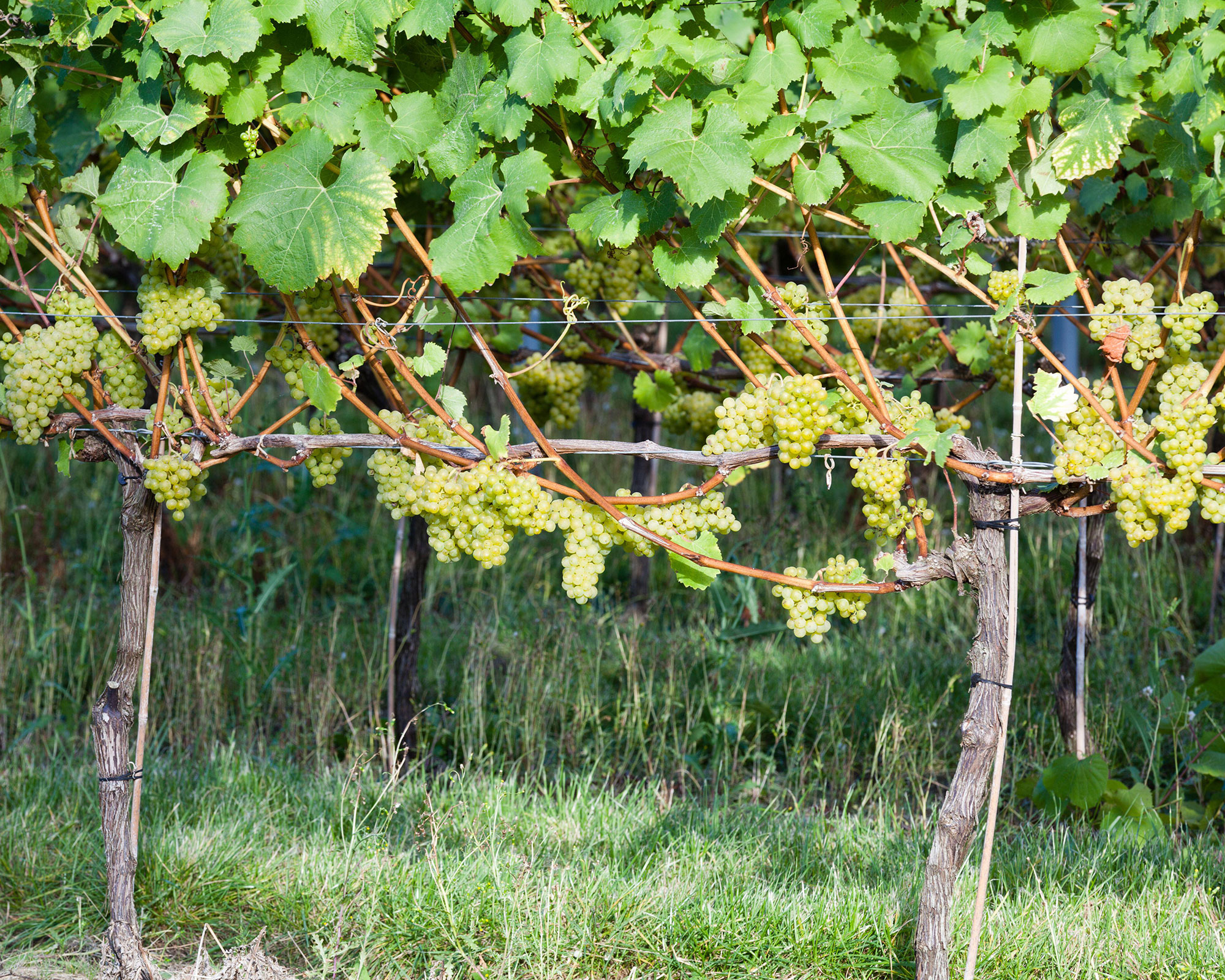
When is the best time for pruning grape vines?
Grape vines are pruned in early to mid winter using a pair of clean, sharp secateurs or pruning shears. They need a hard prune because they produce fruit on new growth generated each year – and they grow incredibly fast. You can prune blackcurrant bushes at a similar time of year too.
I cut my grape vines back at this time of year because they are dormant so the sap has retreated down the stem and they are less likely to ‘bleed’ from pruning wounds. Extensive sap loss weakens the plant and creates an entry point for pests and diseases.
Winter is also a key time for pruning fruit trees, depending on the variety of tree you have in your plot.
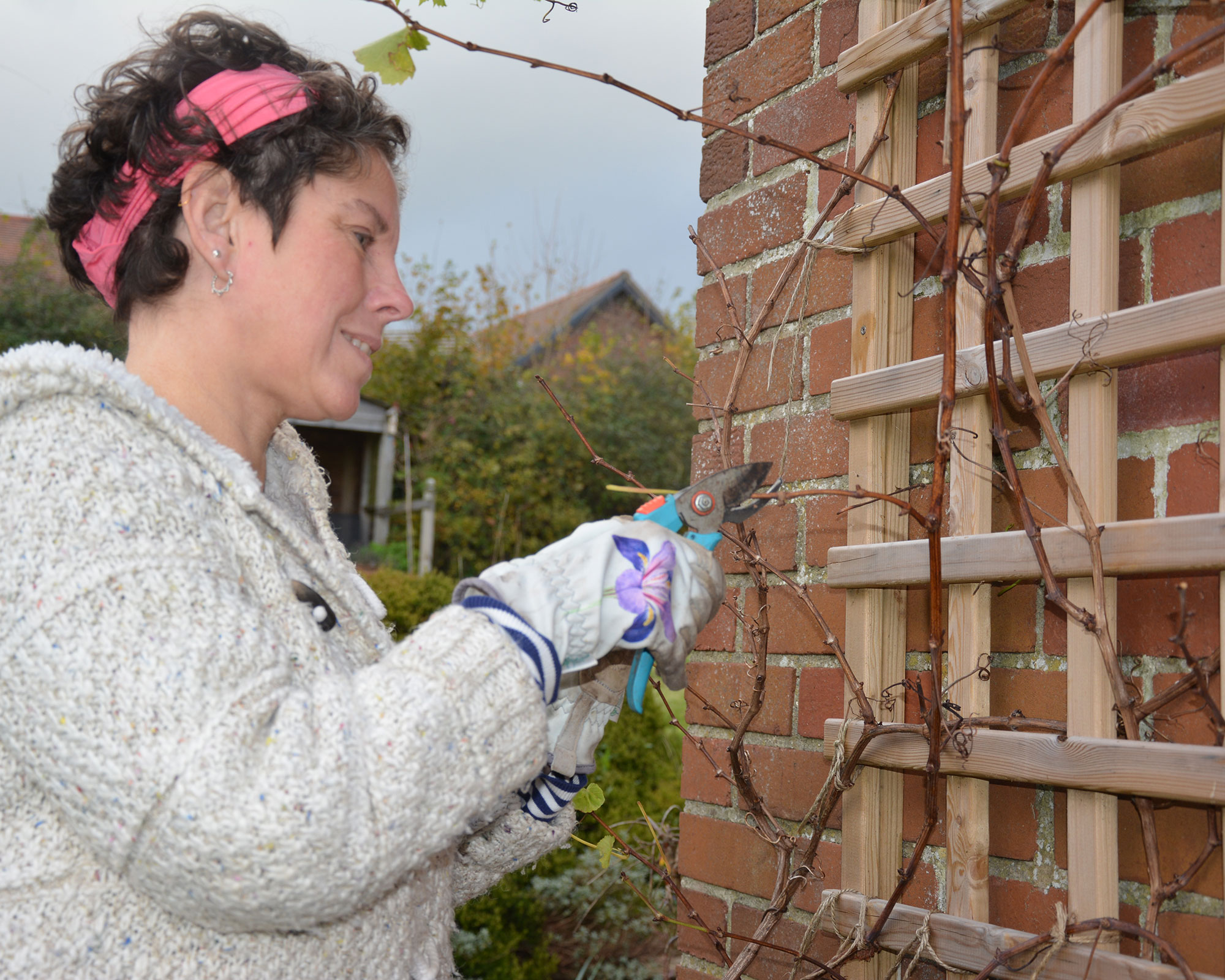
My top tips for pruning grape vines in winter
There are two main methods of pruning grape vines in winter, which I've detailed below. They both involve cutting back a lot of growth, but grape vines grow incredibly fast and giving them a hard prune is the best way to create a strong plant and lots of fruit.
If you've got a young grape vine, it won't need much pruning in its first year, but after that you can cut them back increasingly hard as they mature enough to produce grapes. Following a regular pruning routine after the first year will give them the best chance of producing a plentiful crop.
Pruning grape vines using the 'rod and spur' or cordon method
At the start of winter I follow the ‘rod and spur’ or cordon pruning method, which is used for conservatory vines and those growing along a garden wall. This is the most common form of pruning used by domestic grape growers.
The rod is the vertical stem that matures over the years, the spurs are the shoots growing from the main branches. These are left to grow each year and are cut back after they have fruited. It is an easy method to follow:
- Cut the shoots that have produced fruit this year back to two buds.
- Tie young shoots that haven't yet produced grapes to their climbing plant support so they are growing in the direction you want next year.
- You may also wish to cut back some growth from the main branches if they are growing out of their allotted space.

If you have a young grape vine, it will look very small and twiggy when planted, but it will grow incredibly fast. It will still need yearly pruning to keep it in check and encourage it to fruit well and healthily.
Pruning a young grape vine using the rod and spur, or cordon, system should be done as follows:
- When you plant your vine, cut back the main stem by two thirds and reduce side shoots to one bud – your vine may now look like a barren stick but it will soon grow.
- In its first growing season, cut back side branches to five leaves long, and if these side shoots have offshoots, reduce them to the first leaf.
- Tie these to horizontal supports and as one of your early winter garden jobs, cut back the main stem by a third and reduce the side shoots to one bud.
- In year two let the plant continue growing, though only allow a couple of bunches of grapes to remain otherwise the young vine will be exhausted.
- In early winter of this year, reduce the main stem again, cutting back to a bud on mature growth and cut back the side stems to two strong buds.
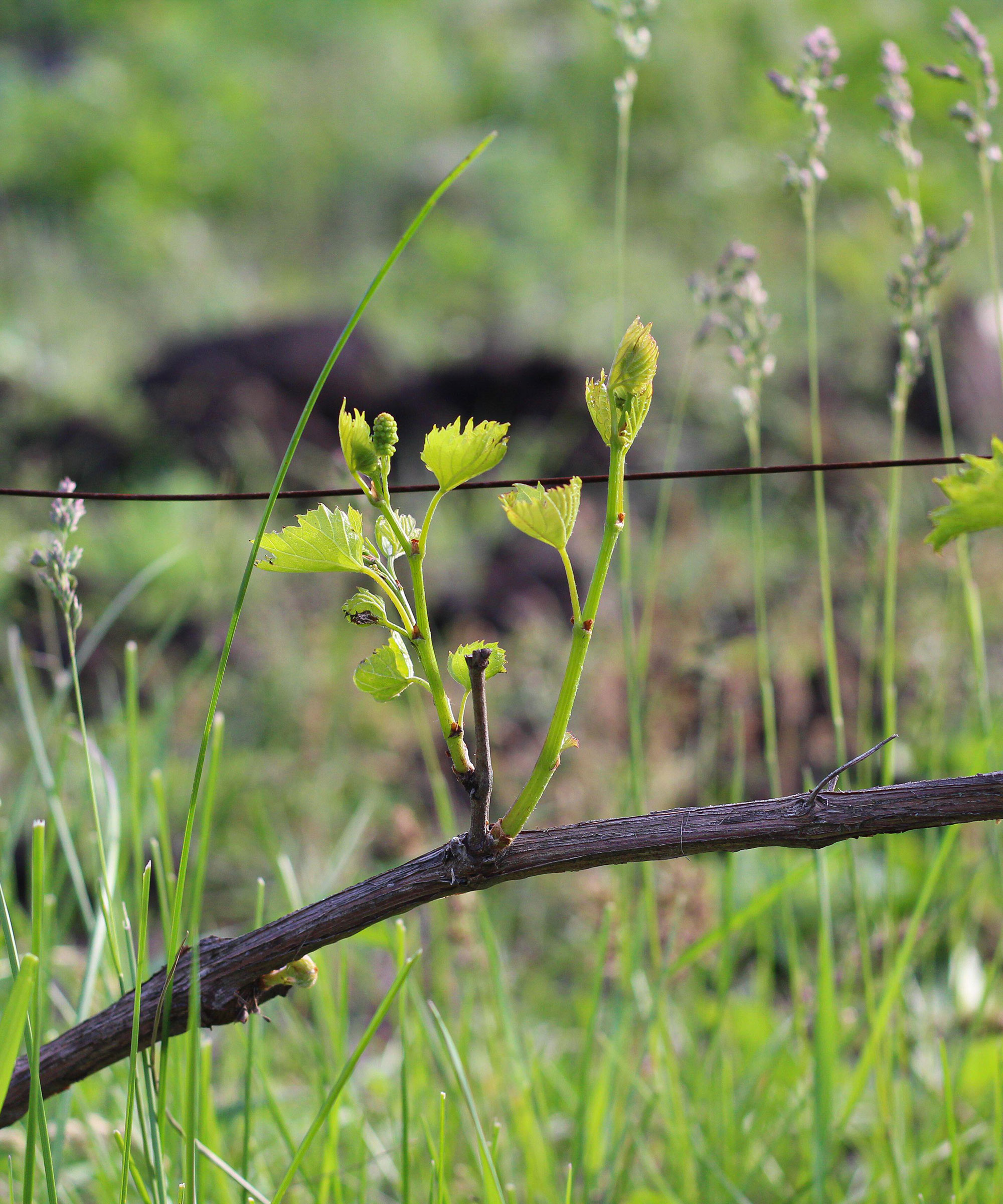
The Guyot method of pruning grape vines in winter
The Guyot method of pruning grape vines is used for freestanding vines that have horizontal shoots attached to wires running off on either side, or just one side, of a central stem.
This involves creating a low-growing central trunk with a succession of new branches that form each year. These young stems are tied in when that year’s mature branches have fruited and been cut back.
- Each winter you remove the fruited stems and train new shoots emerging from the central stem along wires on one side (single Guyot) or both sides (double guyot).
- Then cut down the central trunk to two or three strong buds from the base of the plant.
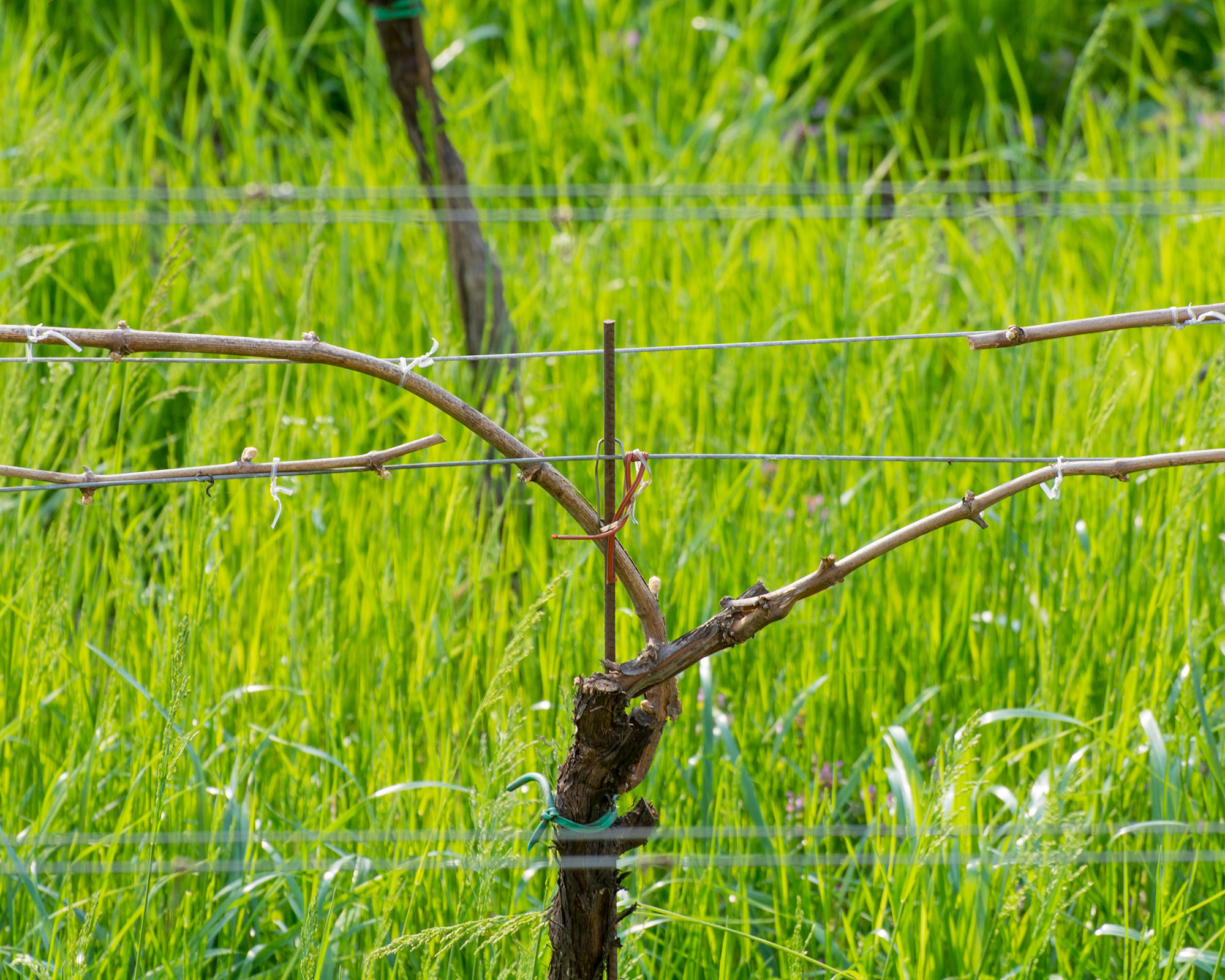
If you're pruning a young grape vine using the Guyot system, during the first year’s growing season you train one strong shoot vertically up a stake, and then rub out any other upward shoots growing from the base of the plant, before reducing the side shoots to just one leaf.
That winter, cut back the main stem to two strong buds 16in (40cm) from the ground. The following year, for the vine’s second growing season, train two or three of the new stems issuing from the buds you left in place the previous year up the cane, rubbing off any other shoots.
These will grow through the summer and in winter you can train them to the left and/or right, reducing them to 2-3ft (60-90cm). The end result will be a short, mature, gnarly stem with two or three grape-bearing side shoots on one or both sides.
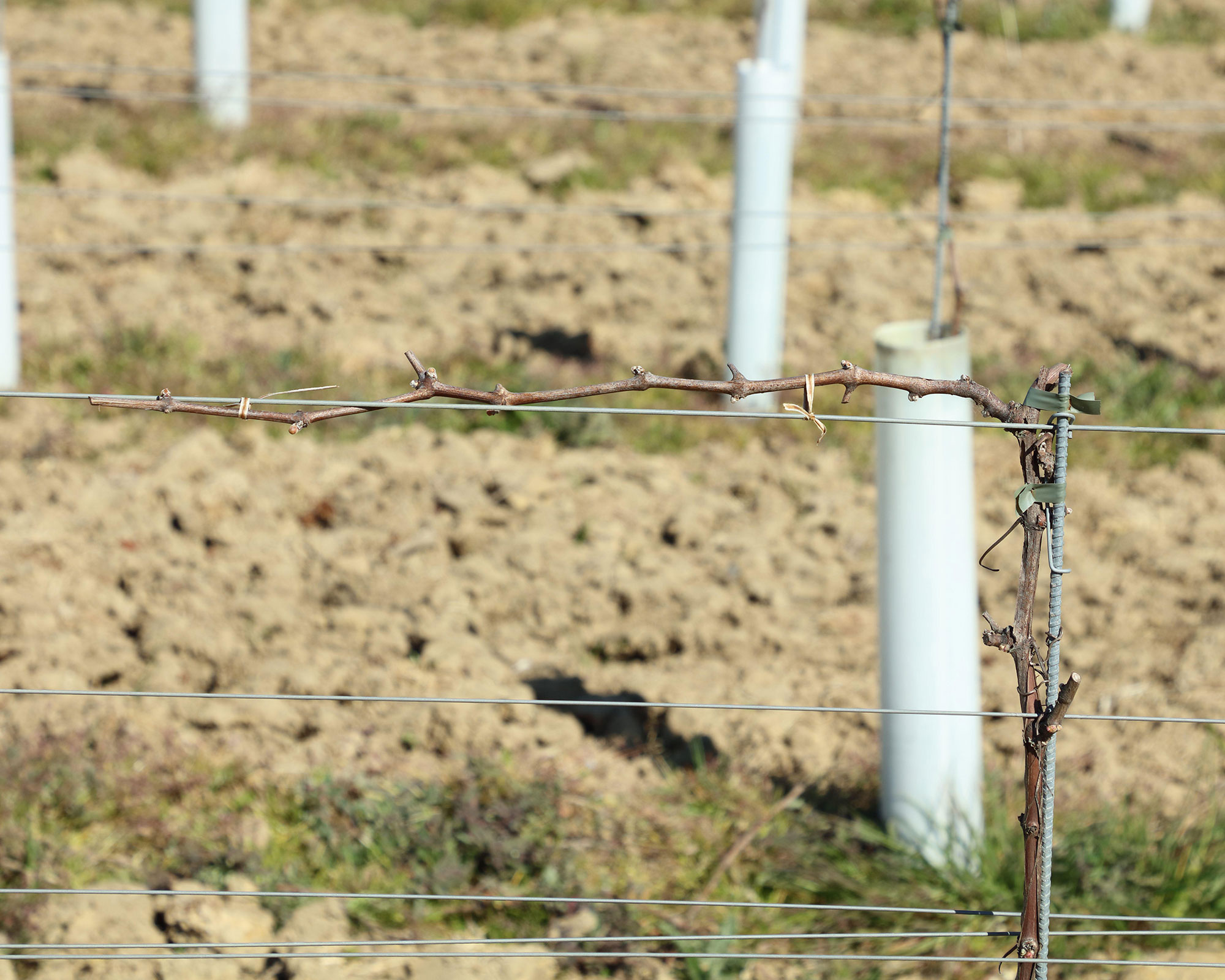
How to prune grape vines in summer
Grape vines are also given a light trim in summer, removing some leaves so light and air can get to the fruits, and cutting off some of the bunches of small grapes so those left on the vine grow larger. Summer is also the time for tying in long, whippy shoots.
If you follow the rod and spur system as detailed above, prune your grape vine again in late spring/early summer when the plant is throwing out strong new shoots. Remove everything except the shoots that will form the plant’s structure and are holding the embryonic bunches of grapes. Cut away some of the leaves so more light and air can reach the grapes to help them ripen.
For the Guyot system, once the growing season is up and running you should tie the new horizontal shoots to their supporting wires.

Ruth is the gardening editor of Amateur Gardening magazine and spends her working days carrying out, writing about and photographing the tasks the readers should be carrying out each week, as well as testing many of the new products that arrive on the gardening market. She is horticulturally trained, with a qualification from the Royal Horticultural Society.
